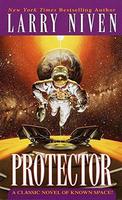Subject

photo credits: Wikimedia Commons
The Solar System is the gravitationally bound system of the Sun and the objects that orbit it. The largest of these objects are the eight planets, which in order from the Sun are four terrestrial planets (Mercury, Venus, Earth and Mars); two gas giants (Jupiter and Saturn); and two ice giants (Uranus and Neptune). The Solar System developed 4.6 billion years ago when a dense region of a molecular cloud collapsed, forming the Sun and a protoplanetary disc. All four terrestrial planets belong to the inner Solar System and have solid surfaces. Inversely, all four giant planets belong to the outer Solar System and do not have a definite surface, as they are mainly composed of gases and liquids. 99.86% of the Solar System's mass is in the Sun and nearly 90% of the remaining mass are in Jupiter and Saturn. There is a strong consensus among astronomers that the Solar System also has nine dwarf planets, which consist of one asteroid-belt object – Ceres; five Kuiper-belt objects – Pluto, Orcus, Haumea, Quaoar, and Makemake; and three scattered-disc objects – Gonggong, Eris, and Sedna. There are a vast number of smaller objects orbiting the Sun, called small Solar System bodies. This category includes asteroids, comets, centaurs, meteoroids and interplanetary dust clouds. Many of these objects are in the asteroid belt between the orbits of Mars and Jupiter (1.5–4.5 AU), and the Kuiper belt just outside Neptune's orbit (30–50 AU). Six of the major planets, the six largest possible dwarf planets, and many of the smaller bodies are orbited by natural satellites, commonly called "moons" after Earth's Moon. Two natural satellites, Jupiter's moon Ganymede and Saturn's moon Titan, are larger than Mercury, the smallest terrestrial planet, though they are less massive. The Solar System is constantly flooded by the Sun's charged particles, the Solar wind, forming the heliosphere. Pushed against by the surrounding interstellar medium of the Local Cloud, the Solar wind starts slowing at 75 to 90 AU (the termination shock), before being halted, resulting in the heliopause, the boundary of the Solar System to interstellar space. The outermost region of the Solar System is the Oort cloud, the source for long-period comets, extending from 2,000 AU to the edge of the Solar System's sphere of gravitational influence at up to 200,000 AU (3.2 ly). The closest star to the Solar System, Proxima Centauri, is 4.25 ly away. The Solar System orbits the Galactic Center of the Milky Way galaxy, as part of its Orion Spur, at a distance of 26,000 ly. Source: Wikipedia (en)
Narratives set in Solar System 6
Narratives set in Solar System 14
- Cryovolcanism in the Solar System
- Exploring the Solar System: A Professional Development Training
- Solar System Remote Sensing: September 20-21, 2002, Pittsburgh, Pennsylvania
- Solar System Fact Finder
- The Science of Solar System Ices (SCSSI): A Cross-Disciplinary Workshop, May 5-8, 2008, Oxnard, California
- Teacher's Guide to the 3-D Tour of the Solar System
- Workshop on Oxygen in the Earliest Solar System: September 19-21, 2005 Gatlinburg, Tennessee
- Workshop on the Early Solar System Impact Bombardment II
- Workshop on Early Solar System Impact Bombardment III
- Workshop on the Early Solar System Impact Bombardment
- Workshop on Formation of the First Solids in the Solar System
- The Year of the Solar System 2014 Undergraduate Research Conference
- Worlds Fantastic, Worlds Familiar: A Guided Tour of the Solar System
- The solar system and its origin / Henry Norris Russell
Subject - wd:Q544


